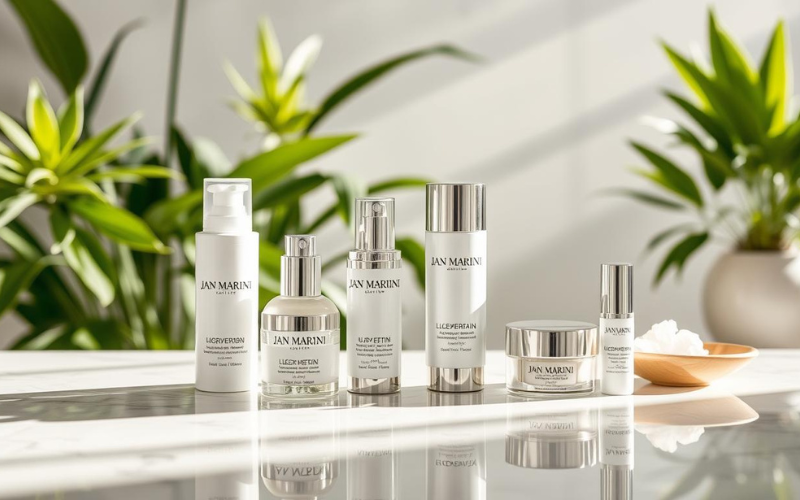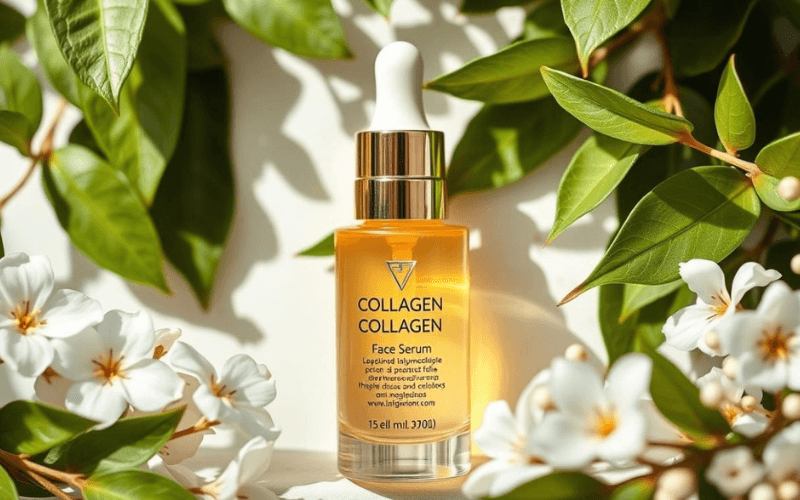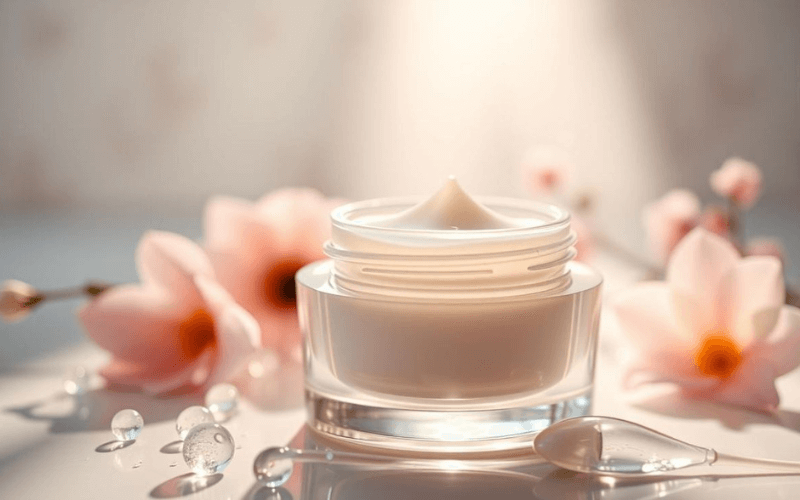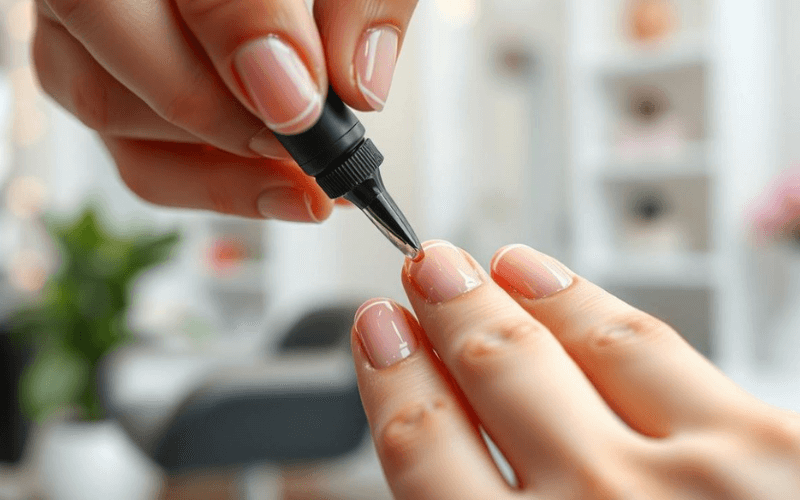If you’ve ever looked in the mirror and wished your skin could look brighter, clearer, or more youthful, you’re not alone. The good news? A skin peeling cream might be exactly what you need to achieve the smooth, glowing complexion you’ve always wanted.
Whether you’re dealing with uneven texture, clogged pores, or dull skin, skin peeling creams can offer the exfoliation and rejuvenation your skin craves.
In this article, we’ll explore what skin peeling creams are, how they work, and how to choose the best one for your unique skin type.
I’ll also share some real-world experiences to help you decide if incorporating a peeling cream into your skincare routine is the right choice for you. Let’s dive into the world of skin peeling creams and discover how they can help you achieve smoother, more radiant skin!
- What Is a Skin Peeling Cream?
- How Does Skin Peeling Cream Work?
- Types of Skin Peeling Creams
- Top 5 Skin Peeling Creams for Smooth, Radiant Skin
- Benefits of Using Skin Peeling Cream
- How to Use a Skin Peeling Cream in Your Skincare Routine
- How to Choose the Best Skin Peeling Cream for Your Skin Type
- How to Incorporate Skin Peeling Cream Safely into Your Routine
- Common Side Effects and How to Minimize Them
- When Should You Avoid Using Skin Peeling Creams?
- Final Thoughts: Achieve Smooth, Glowing Skin with the Right Skin Peeling Cream
What Is a Skin Peeling Cream?
A skin peeling cream is a type of exfoliating treatment designed to remove dead skin cells from the surface of your skin.
Unlike physical scrubs that use granules to slough off dead cells, peeling creams use chemical exfoliants to dissolve the bonds that hold dead skin together. This process helps reveal fresh, healthy skin underneath, promoting a more even texture and radiant glow.
Peeling creams often contain powerful ingredients like alpha-hydroxy acids (AHAs), beta-hydroxy acids (BHAs), or enzymes, which can penetrate deeper into the skin than a typical exfoliant. By encouraging cell turnover, skin peeling creams can help to:
- Smooth out rough patches
- Reduce the appearance of fine lines and wrinkles
- Unclog pores and reduce acne
- Improve skin tone and texture
- Brighten dull, tired skin
How Does Skin Peeling Cream Work?
Skin peeling creams work by speeding up the skin’s natural exfoliation process. The top layer of your skin, called the stratum corneum, is composed of dead skin cells. Normally, your skin sheds these cells over time, but as we age or due to other factors, this process slows down, leading to a buildup of dead skin, clogged pores, and dullness.
When you apply a skin peeling cream, the active ingredients penetrate the skin and help dissolve the bonds that hold dead skin cells together. This makes it easier for the skin to shed these cells, revealing newer, healthier skin underneath. In some cases, peeling creams may cause visible peeling or flaking, but more commonly, the process is subtle, resulting in smoother, clearer skin over time.
Types of Skin Peeling Creams
Not all skin peeling creams are created equal, and the type you choose should depend on your skin type and concerns. Here’s a breakdown of the most common types of peeling creams and how they work:
1. Alpha-Hydroxy Acids (AHAs)
AHAs are water-soluble acids derived from fruits and milk. They work by breaking down the bonds between dead skin cells on the surface of the skin, making them ideal for treating dry, sun-damaged, or aging skin. Some popular AHAs include glycolic acid and lactic acid.
- Best For: Dry or mature skin, dullness, fine lines, and uneven skin tone.
- How It Works: AHAs primarily exfoliate the skin’s surface, improving texture and tone.
2. Beta-Hydroxy Acids (BHAs)
BHAs are oil-soluble acids that penetrate deeper into the pores, making them an excellent choice for oily or acne-prone skin. Salicylic acid is the most common BHA, and it’s particularly effective for clearing up blackheads and whiteheads.
- Best For: Oily, combination, or acne-prone skin.
- How It Works: BHAs exfoliate both the skin’s surface and inside the pores, unclogging them and reducing breakouts.
3. Enzyme Peels
Enzyme peels use natural enzymes, often derived from fruits like papaya or pineapple, to gently exfoliate the skin. These peels tend to be milder than acid-based peels, making them a great option for sensitive skin.
- Best For: Sensitive skin or those new to peeling treatments.
- How It Works: Enzymes digest the dead skin cells, leaving the skin softer and smoother without irritation.
4. Retinoids
Retinoids, a derivative of vitamin A, aren’t technically an acid, but they work similarly by speeding up cell turnover. Retinoid creams help shed dead skin while also promoting collagen production, making them ideal for anti-aging concerns.
- Best For: Aging skin, fine lines, wrinkles, and uneven skin tone.
- How It Works: Retinoids increase cell turnover and stimulate collagen production for firmer, smoother skin.
Top 5 Skin Peeling Creams for Smooth, Radiant Skin
Ready to add a skin peeling cream to your skincare routine? Here are five top-rated products that can help you achieve smoother, clearer skin:
1. The Ordinary AHA 30% + BHA 2% Peeling Solution

- Why It’s Great: This potent combination of AHAs and BHAs provides deep exfoliation, helping to clear up breakouts and improve skin texture.
- Best For: Oily, acne-prone, or combination skin.
2. Drunk Elephant T.L.C. Sukari Babyfacial
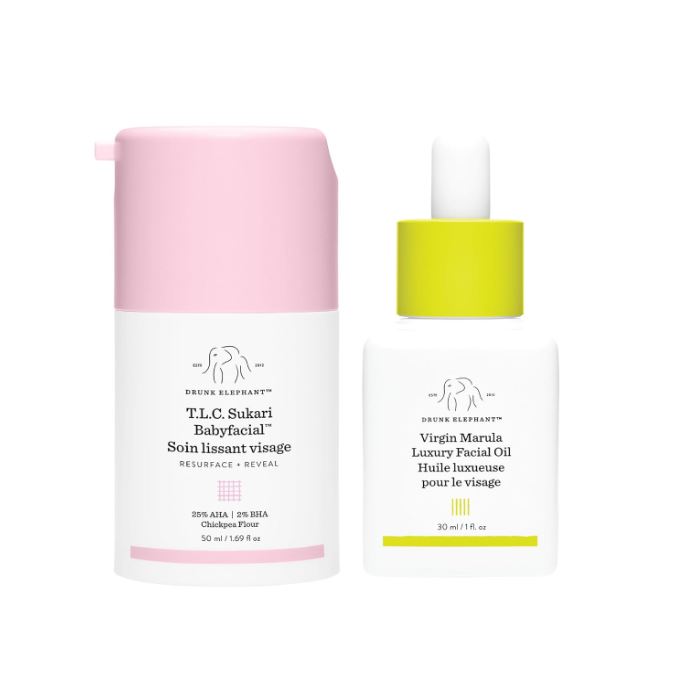
- Why It’s Great: A blend of glycolic, tartaric, and salicylic acids, this product delivers a professional-grade peel at home, leaving skin baby-smooth.
- Best For: All skin types, especially dull or textured skin.
3. Paula’s Choice Skin Perfecting 2% BHA Liquid Exfoliant
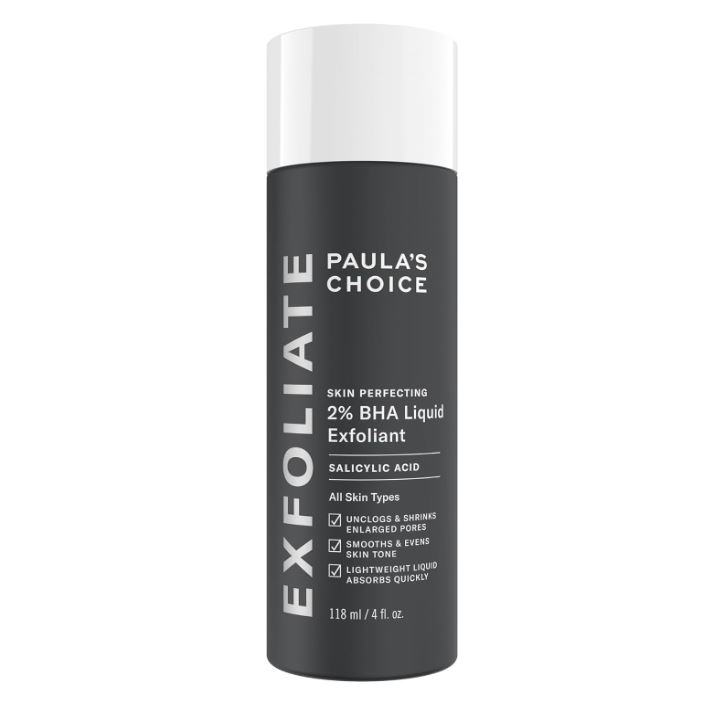
- Why It’s Great: This BHA exfoliant is a cult favorite for clearing up blackheads, minimizing pores, and reducing breakouts.
- Best For: Oily and acne-prone skin.
4. Mario Badescu Enzyme Revitalizing Mask
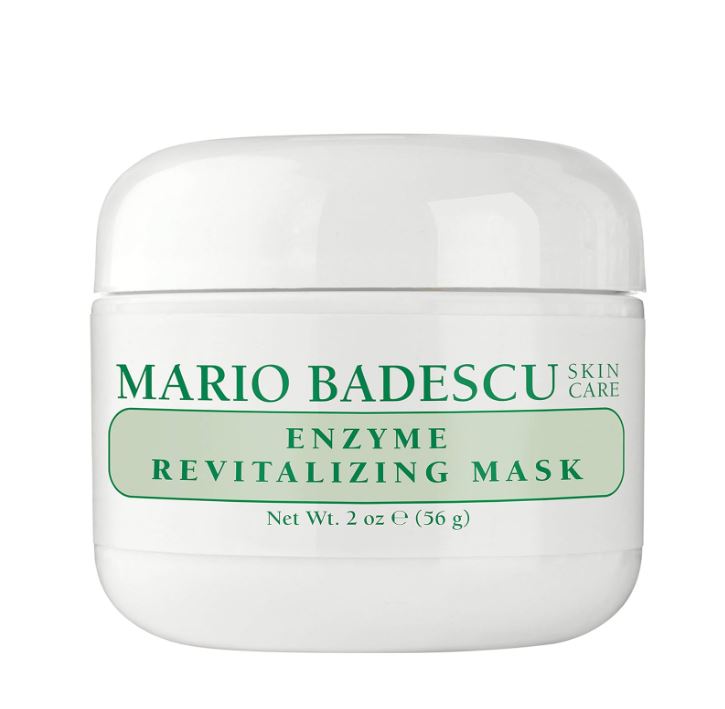
- Why It’s Great: Infused with papaya and grapefruit extracts, this enzyme peel gently exfoliates to reveal smoother, glowing skin.
- Best For: Sensitive skin.
5. Pixi Glow Tonic
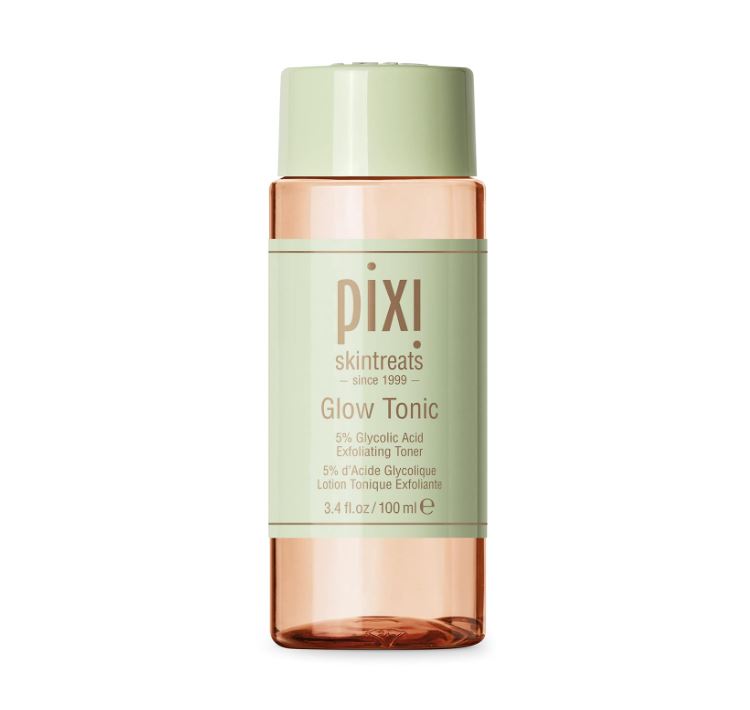
- Why It’s Great: This gentle glycolic acid toner provides a mild exfoliation that can be used daily to improve skin tone and texture.
- Best For: Normal to dry skin.
Benefits of Using Skin Peeling Cream
Now that you know how skin peeling creams work, let’s dive into the specific benefits they offer:
1. Smooths Skin Texture
One of the primary reasons people turn to skin peeling creams is to improve their skin’s texture. Whether you’re dealing with rough patches or fine lines, a peeling cream can help smooth your skin by removing dead cells and revealing softer skin underneath.
2. Brightens Skin Tone
Peeling creams can dramatically improve dull, uneven skin tone by exfoliating the surface and promoting cell turnover. Regular use of a peeling cream can help reduce the appearance of dark spots, hyperpigmentation, and post-acne marks, leaving your skin with a more even and radiant complexion.
3. Unclogs Pores and Reduces Acne
If you struggle with clogged pores, blackheads, or acne, a peeling cream with BHAs (like salicylic acid) can work wonders. By penetrating deep into the pores, these creams help to dissolve oil and dead skin buildup, reducing breakouts and leaving pores looking smaller and clearer.
4. Reduces the Appearance of Fine Lines and Wrinkles
For those concerned about aging, skin peeling creams can help reduce the appearance of fine lines and wrinkles by encouraging new cell growth and increasing collagen production. Over time, this can lead to firmer, more youthful-looking skin.
5. Preps Skin for Other Products
By removing dead skin cells, skin peeling creams can help other skincare products (like serums and moisturizers) penetrate deeper and work more effectively. You’ll get more bang for your buck with your other skincare products when you use a peeling cream regularly.
How to Use a Skin Peeling Cream in Your Skincare Routine
While skin peeling creams can deliver impressive results, it’s important to use them correctly to avoid irritation. Here are some tips for incorporating a peeling cream into your routine:
1. Start Slow
If you’re new to skin peeling creams, it’s essential to start slowly. Begin by using the cream once or twice a week to see how your skin reacts, especially if you’re using a stronger product like an AHA or BHA. Over time, you can increase the frequency as your skin adjusts.
2. Always Follow with Sunscreen
Skin peeling creams make your skin more sensitive to the sun, so it’s crucial to apply sunscreen every day. Without adequate protection, you risk damaging your newly revealed skin and undoing the benefits of your peeling treatment.
3. Moisturize Regularly
Peeling creams can sometimes cause dryness or irritation, so make sure to follow up with a good moisturizer to keep your skin hydrated and balanced. Look for a product that is gentle and free from heavy fragrances or alcohols.
4. Don’t Over-Exfoliate
While it’s tempting to use a peeling cream more often for faster results, over-exfoliating can lead to irritation, redness, and damage to your skin barrier. Stick to a consistent routine, but don’t overdo it—your skin needs time to recover between treatments.
How to Choose the Best Skin Peeling Cream for Your Skin Type
With so many options on the market, choosing the best skin peeling cream can feel overwhelming. Here’s a quick guide to help you find the right product for your skin type:
1. Dry or Mature Skin
If you have dry or aging skin, look for a skin peeling cream that contains AHAs like glycolic acid or lactic acid. These ingredients are gentle yet effective at exfoliating while providing hydration to improve texture and tone.
- Recommended Ingredients: Glycolic acid, lactic acid, retinoids.
- Best Products: Glycolic acid-based peeling creams with added hydrating ingredients.
2. Oily or Acne-Prone Skin
For oily or acne-prone skin, a BHA-based peeling cream with salicylic acid is your best bet. BHAs work deep within the pores to remove excess oil and dead skin, reducing breakouts and clearing blackheads.
- Recommended Ingredients: Salicylic acid, retinoids.
- Best Products: Salicylic acid-based peeling creams for deep pore cleansing.
3. Sensitive Skin
If you have sensitive skin, you’ll want to opt for a gentler exfoliant like an enzyme peel or a product with a lower concentration of acids. These products will still help to remove dead skin but in a more soothing, less irritating way.
- Recommended Ingredients: Enzymes (like papaya or pineapple), lactic acid.
- Best Products: Enzyme peels or lactic acid-based creams designed for sensitive skin.
4. Combination Skin
For combination skin, look for a balanced formula that addresses both dry patches and oilier areas. A gentle AHA/BHA blend can help exfoliate without stripping moisture from drier areas of your skin.
- Recommended Ingredients: Glycolic acid, salicylic acid.
- Best Products: A combination of AHA and BHA-based creams.
How to Incorporate Skin Peeling Cream Safely into Your Routine
While skin peeling creams can deliver incredible results, using them safely is key to preventing potential irritation or damage. Here are some tips to make sure you’re using your peeling cream correctly and maximizing its benefits:
1. Perform a Patch Test
Before applying a skin peeling cream to your entire face, it’s essential to do a patch test. Apply a small amount of the cream to a discreet area of your skin (like behind your ear or on your inner arm) and wait 24 hours to check for any adverse reactions. This is especially important if you’re using a stronger formula like one with AHAs or BHAs.
2. Start Slowly and Build Up
If you’re new to chemical exfoliants, don’t rush into using them every day. Start by applying the peeling cream once or twice a week to allow your skin to adjust. Over time, as your skin becomes more tolerant, you can gradually increase the frequency of use. Listen to your skin—if you notice irritation or excessive dryness, give your skin a break.
3. Don’t Combine Too Many Actives
Skin peeling creams are already powerful exfoliants, so avoid layering them with other strong active ingredients like retinoids, vitamin C, or harsh scrubs. Mixing multiple exfoliants can overwhelm your skin and cause irritation, redness, or peeling. Stick to a simple routine on the days you use a skin peeling cream—focus on hydration and sun protection.
4. Always Follow Up with Hydration
Skin peeling creams can leave your skin feeling dry or tight after use, so it’s important to follow up with a gentle, hydrating moisturizer. Look for creams or serums with hyaluronic acid, glycerin, or ceramides to help replenish your skin’s moisture barrier. This will soothe any irritation and help your skin recover faster.
5. Limit Sun Exposure and Use Sunscreen
Chemical exfoliants like AHAs and BHAs can increase your skin’s sensitivity to the sun, making it more vulnerable to sun damage. After using a skin peeling cream, always apply a broad-spectrum sunscreen with at least SPF 30 before going outdoors, even on cloudy days. This helps prevent hyperpigmentation and protects your newly exfoliated skin from harmful UV rays.
Common Side Effects and How to Minimize Them
Although skin peeling creams offer a range of benefits, they can also cause some side effects, particularly if used improperly. Here’s how to identify common side effects and what you can do to minimize them:
1. Redness and Irritation
It’s normal to experience mild redness or tingling when first using a skin peeling cream, especially if the product contains a high concentration of acids. However, if the redness persists or your skin feels irritated for more than a day, it’s a sign that the cream may be too strong for your skin.
How to Minimize: Start with a lower concentration of AHAs or BHAs and gradually build up your skin’s tolerance. Be sure to apply a soothing moisturizer after each use and limit your exposure to other exfoliating products.
2. Dryness and Flaking
Some peeling creams, particularly stronger formulas, can cause dryness or flaking as your skin adjusts. This is often part of the normal exfoliation process, but excessive peeling can lead to irritation.
How to Minimize: Use a hydrating cream immediately after applying your skin peeling cream and limit the frequency of use until your skin becomes accustomed to it. Avoid over-exfoliating by sticking to a once or twice-weekly schedule.
3. Breakouts or Purging
It’s not uncommon to experience breakouts or “purging” when you first start using a skin peeling cream. This happens because the cream is encouraging cell turnover, which may push impurities to the surface of your skin. Breakouts caused by purging are typically short-lived and clear up as your skin adjusts.
How to Minimize: If you experience purging, be patient—it usually lasts only a few weeks. Continue with your routine, but reduce the frequency of peeling cream applications if your skin becomes overly irritated.
4. Increased Sun Sensitivity
As mentioned earlier, chemical exfoliants can make your skin more sensitive to the sun. If you skip sunscreen after using a peeling cream, you risk developing sunburn or hyperpigmentation.
How to Minimize: Always wear sunscreen daily and avoid prolonged sun exposure, especially during peak hours. Reapply sunscreen every two hours when spending extended time outdoors.
When Should You Avoid Using Skin Peeling Creams?
While skin peeling creams can work wonders, there are times when it’s best to avoid using them. Here are a few situations where you may want to skip your peeling cream:
1. If You Have an Active Sunburn
If your skin is sunburned, applying a skin peeling cream can further irritate and damage your skin. Wait until your sunburn has healed completely before resuming the use of any exfoliating products.
2. If You’re Using Retinoids
Retinoids and chemical exfoliants can be too much for the skin when used together, as both increase cell turnover and can cause irritation. If you’re using a prescription retinoid or an over-the-counter retinol product, alternate days with your skin peeling cream, or consult with a dermatologist to ensure you’re not over-exfoliating.
3. If Your Skin is Severely Irritated
If you’re experiencing redness, peeling, or any signs of compromised skin barrier health, give your skin a break. Continuing to use a skin peeling cream on already irritated skin can worsen the situation and prolong the healing process.
Final Thoughts: Achieve Smooth, Glowing Skin with the Right Skin Peeling Cream
Skin peeling creams can transform your complexion, revealing smoother, clearer, and more radiant skin with regular use. By choosing the right product for your skin type and incorporating it into your routine, you can enjoy the benefits of gentle exfoliation and rejuvenation without the need for harsh treatments.
Remember, consistency is key when it comes to skincare. Whether you’re battling acne, uneven texture, or signs of aging, a high-quality skin peeling cream can help you achieve the results you’ve been dreaming of—soft, smooth, and glowing skin.
With the right product and a little patience, your best skin is just around the corner!


